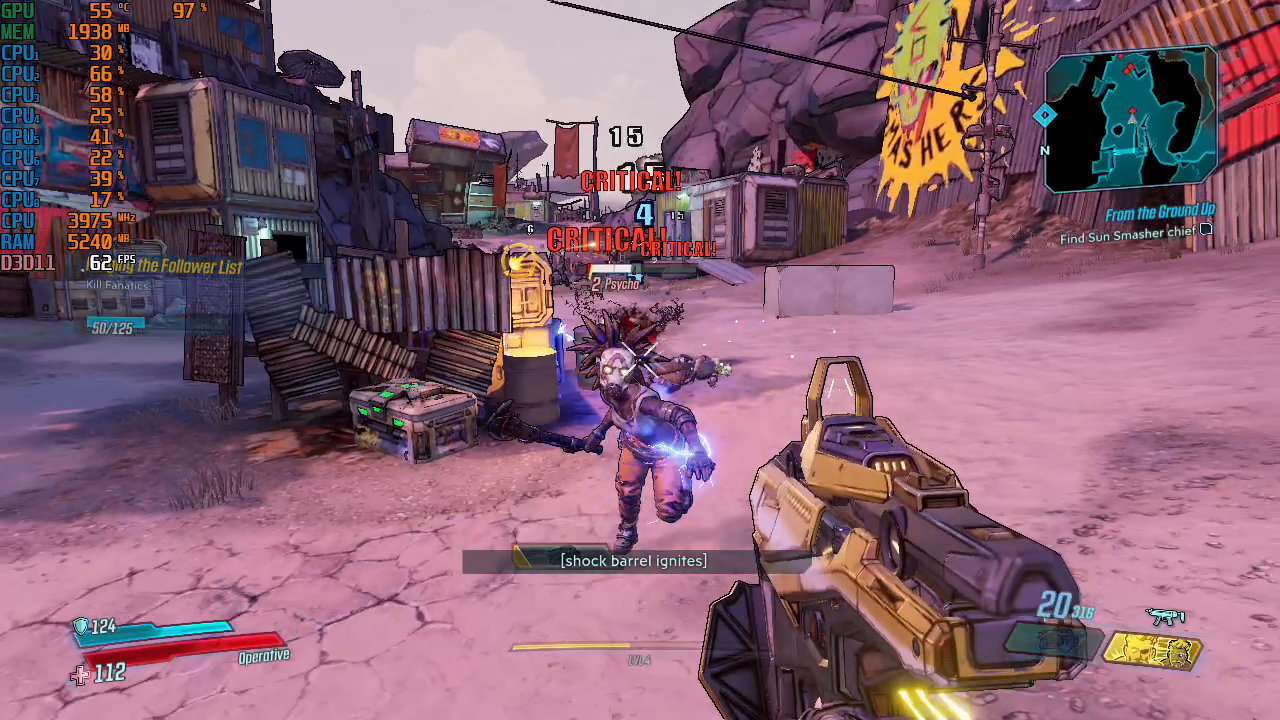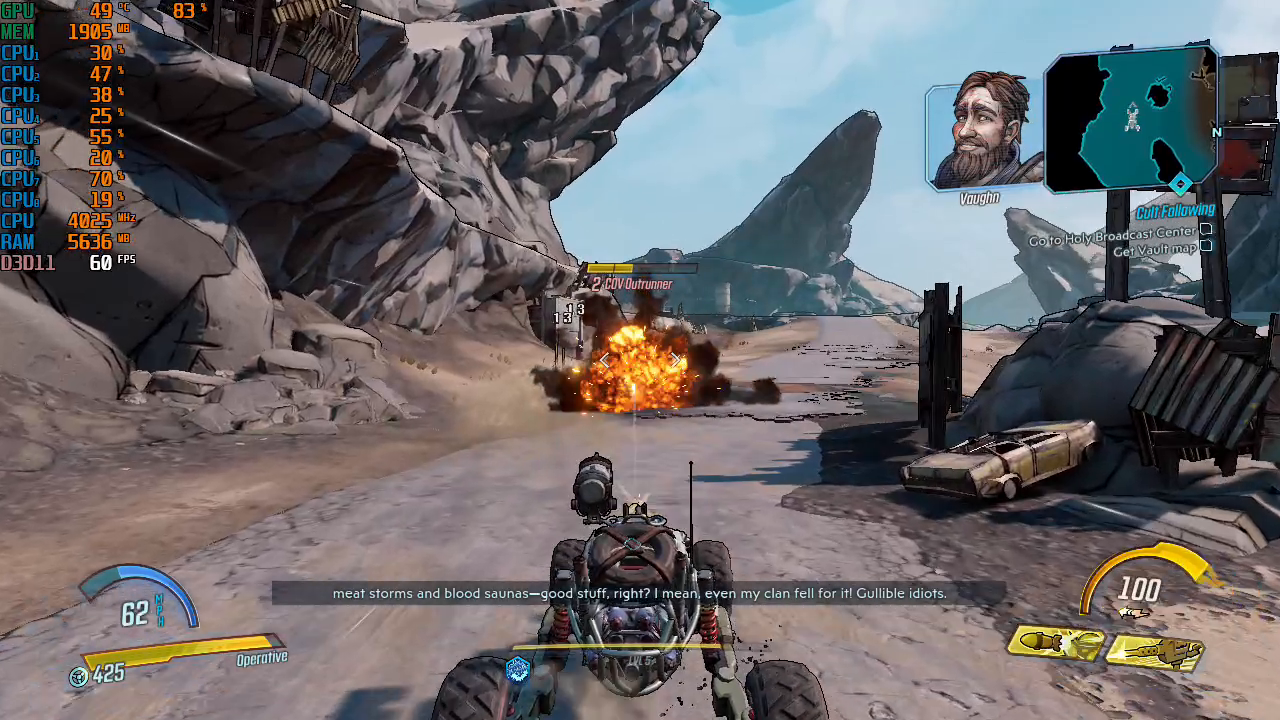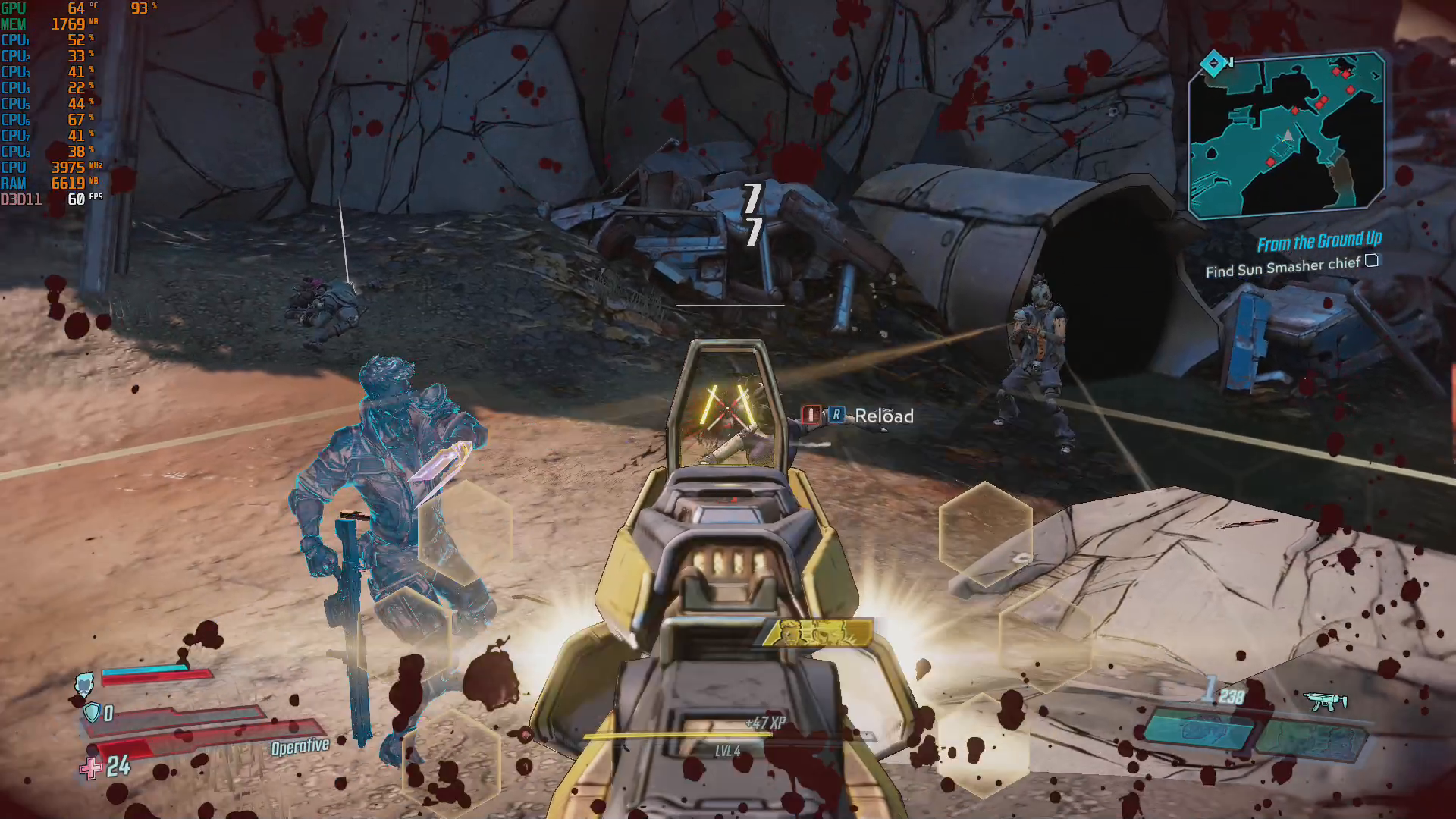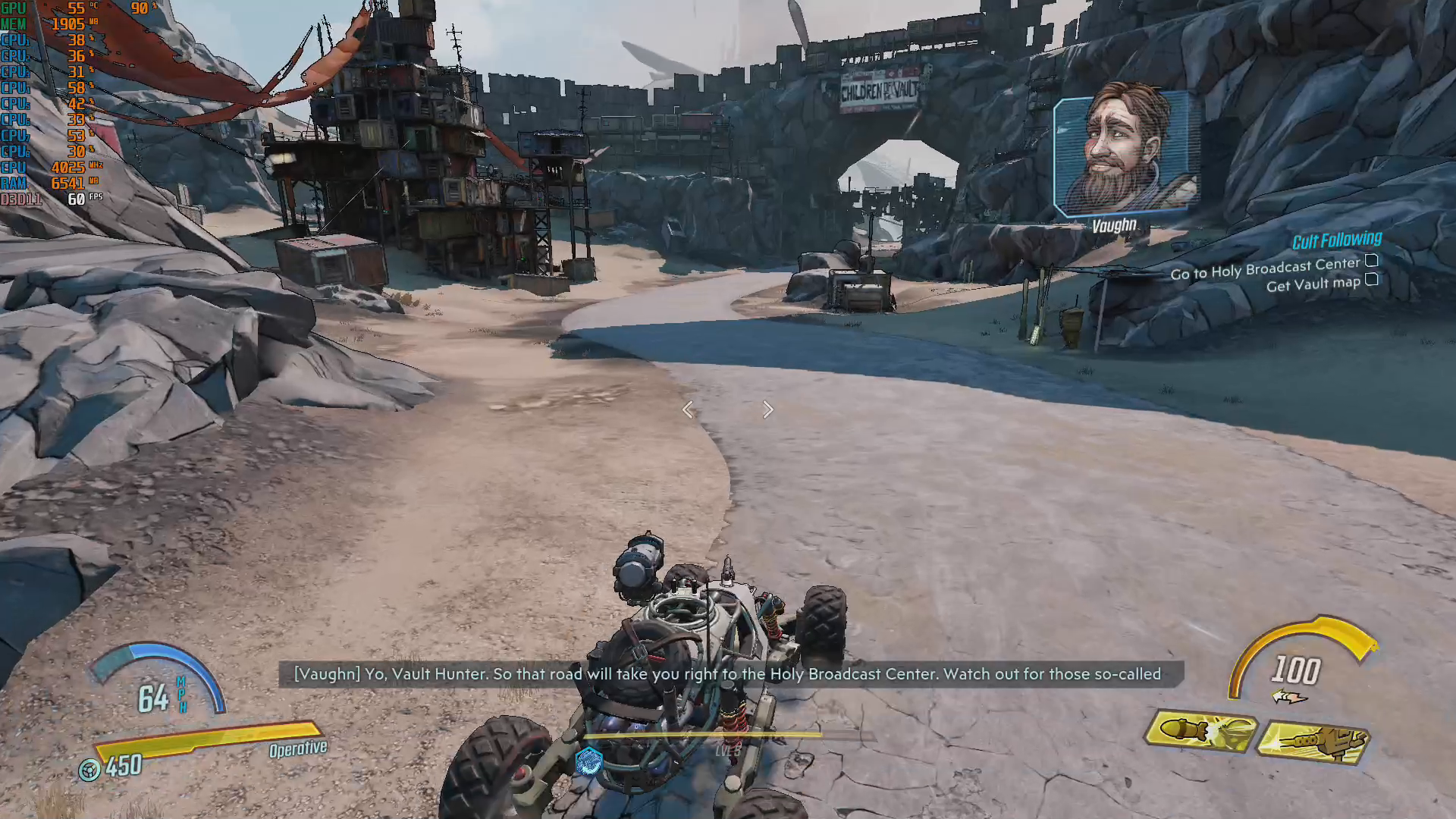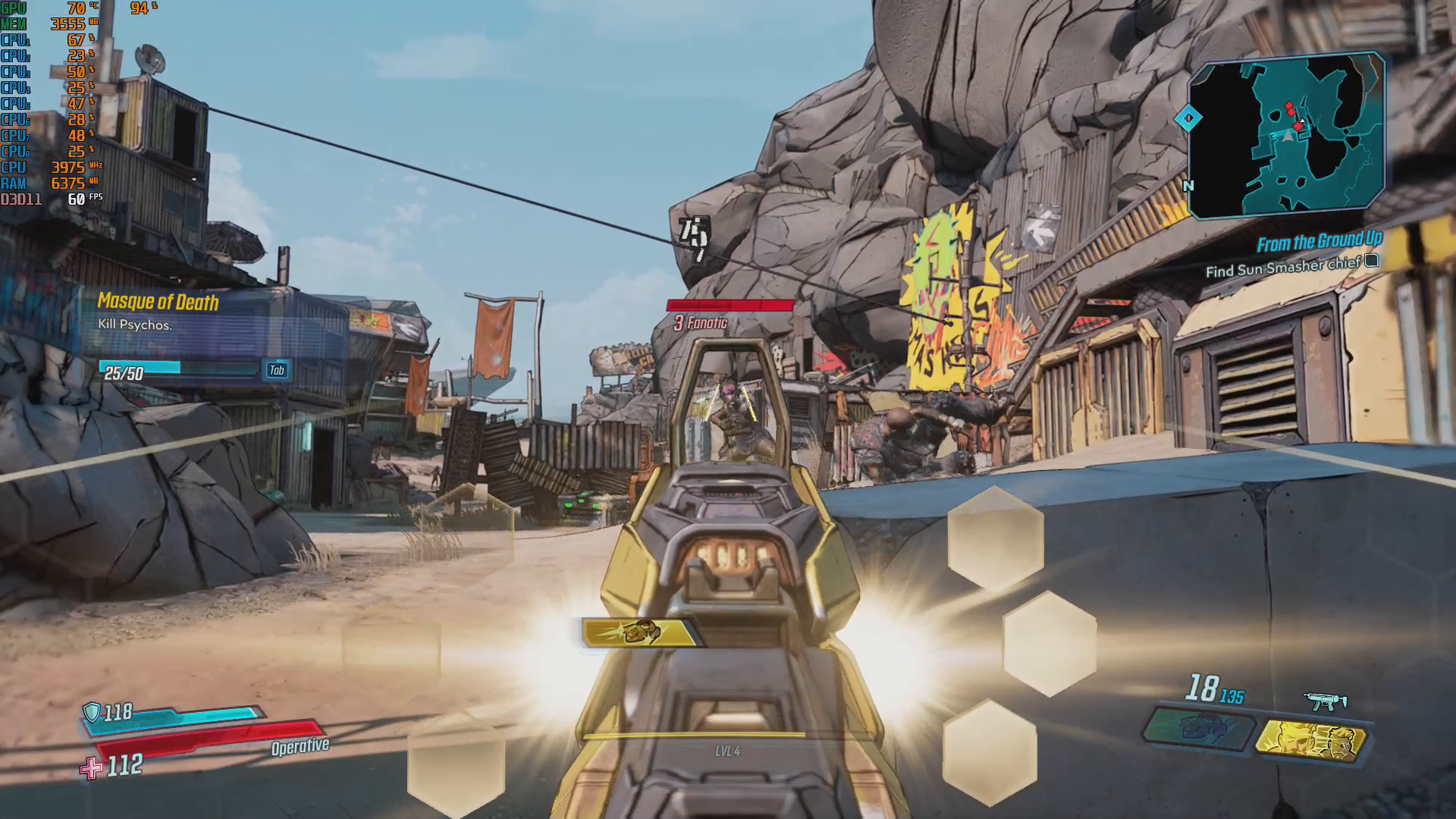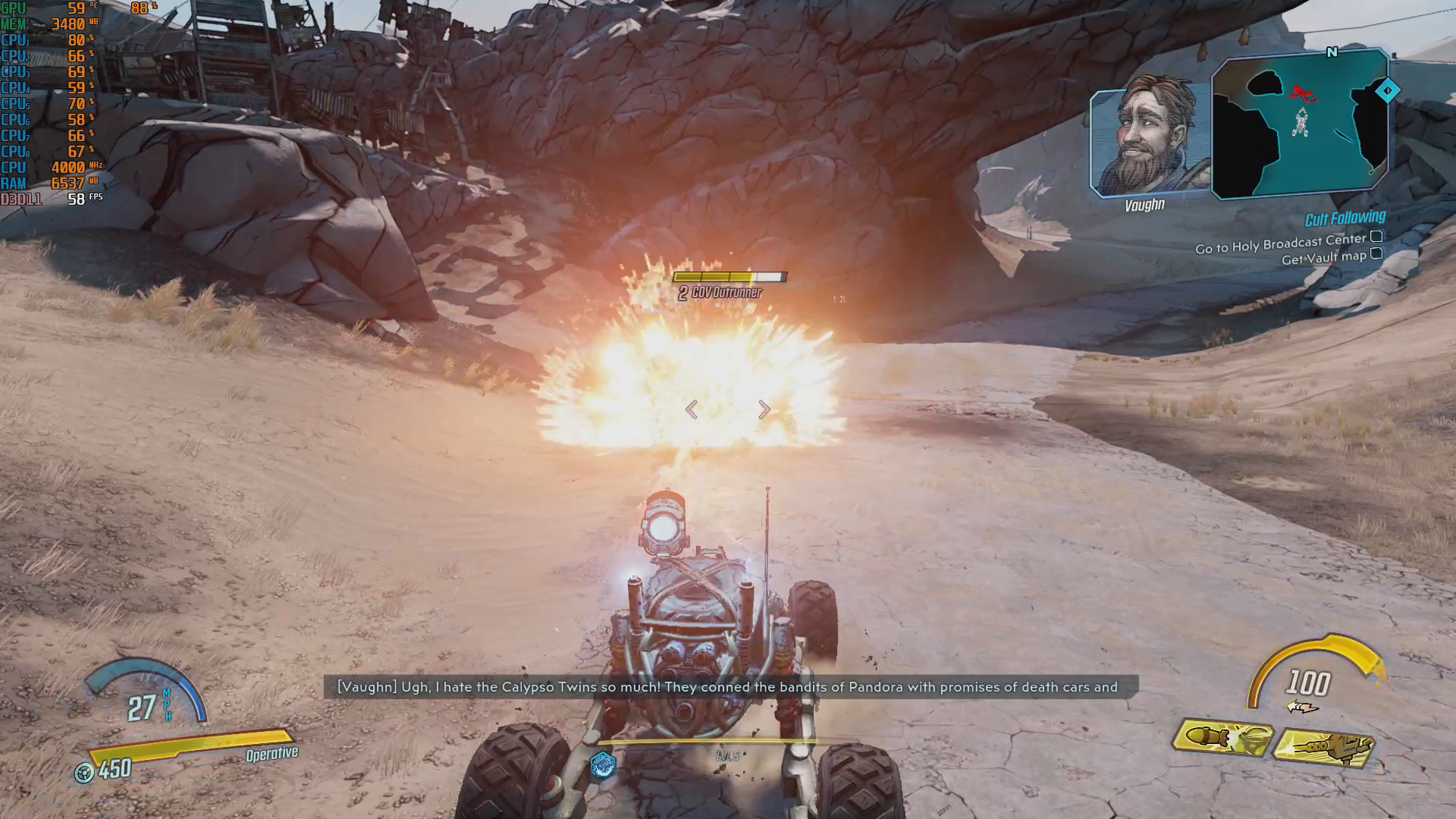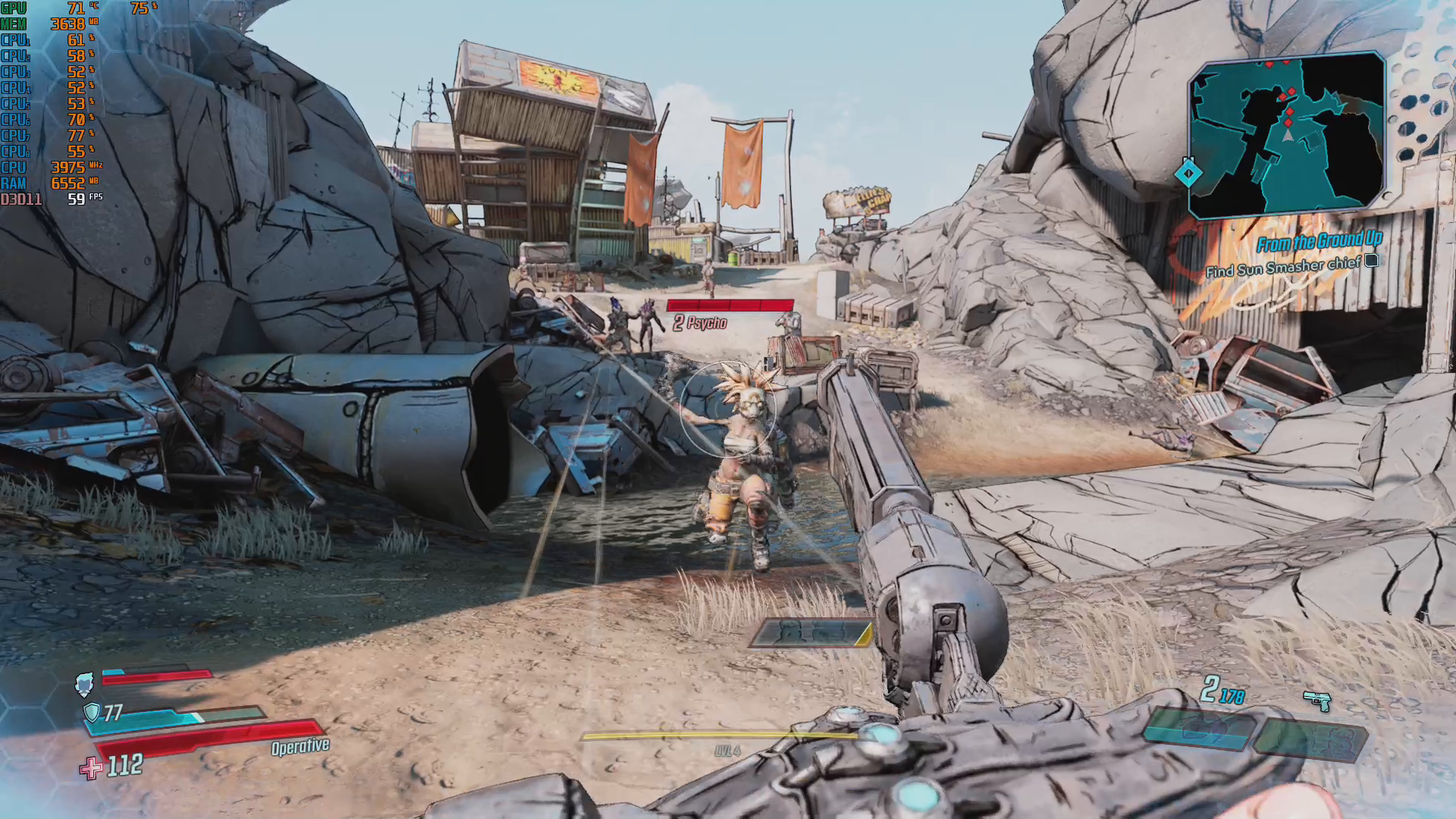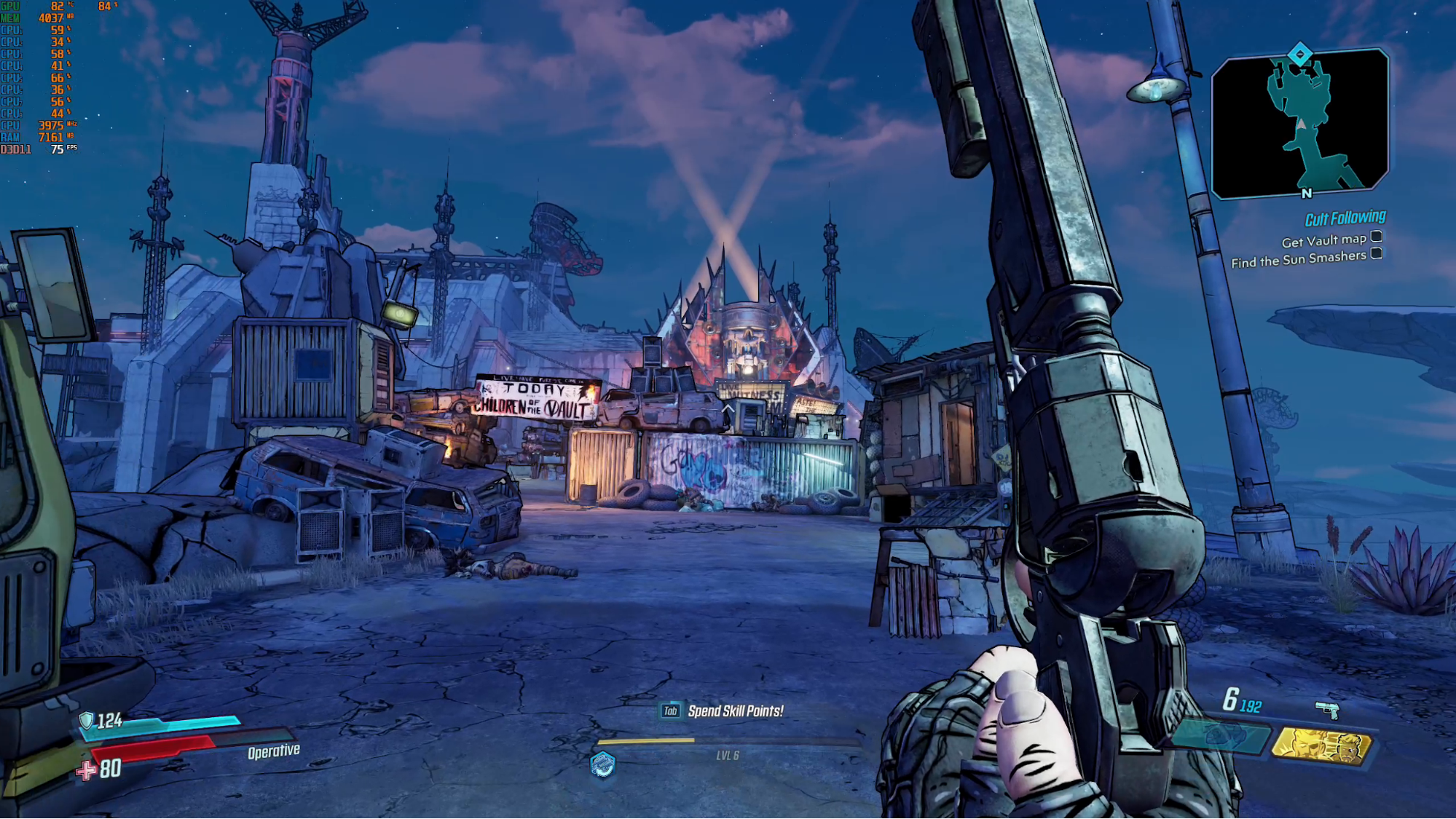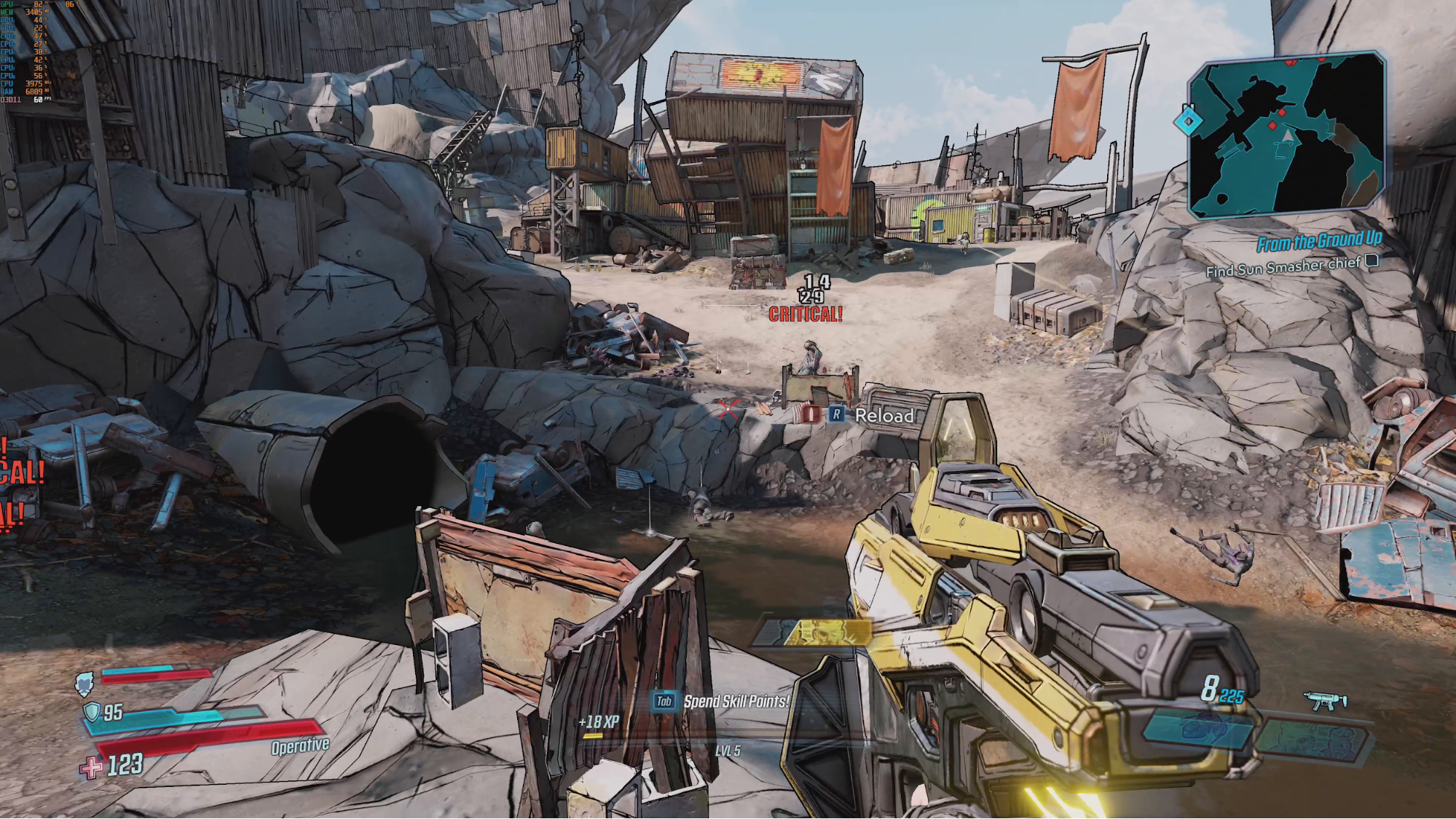Borderlands 3: How it Plays on Different Graphics Cards
Seven years after the release of genre-defining loot shooter Borderlands 2, Gearbox returns to the franchise with a third installment.
Technology has changed quite a bit since 2012, and the new game brings minimum requirements, not unlike those of any other 2019 title. What can you expect to get in terms of experience for GPUs in the still popular previous generation?
I set out to do some testing on a variety of systems to answer this very question.
| Setup | Settings | Performance |
| Ryzen 5 3400G + Vega 11 iGPU8 GB RAM | Lowest, 720p | 45-60 fps |
| Ryzen 5 3400G + GTX 105016 GB RAM | Low, 1080p | 60 fps |
| Ryzen 5 3400G + GTX 106016 GB RAM | High + Volumetric Fog Off, 1080p | 60 fps |
| Ryzen 5 3400G + GTX 108016 GB RAM | Ultra, 1080p | 60 fps |
| Ryzen 5 3400G + GTX 108016 GB RAM | Lowest, 3840x2160 | 60-70 fps |
Vega Integrated GPUs
The Ryzen 5 3400G includes integrated Vega 11 graphics that AMD claims are the strongest integrated graphics in the PC space, excelling in lighter eSports titles and often able to do decent 720p or 1080p performance on heavier games.
This is the case for Borderlands 3, where the 3400G paired with 3000 MHz dual-channel RAM can pull near 60 fps at 720p on the lowest settings with only occasional drops in heavier moments to the upper 40s. That's not bad at all for an integrated GPU on a game that just came out.
One advantage this game has is that its cell-shaded visual style makes it both appealing and readable at a variety of settings and resolutions. While the poor quality effects and shadows can be a bit notorious, the game feels really good in everything except you only have the visual clarity of 720p.
Driving around any map puts the asset streaming of this game to the test, which can lead to occasional stuttering, but surprisingly the Vega 11 is able to keep these settings going on those scenes with only occasional drops when explosions or other effects happen very close to the player.
Get Tom's Hardware's best news and in-depth reviews, straight to your inbox.
The situation is a little bit more complicated for weaker integrated GPUs. With some adjustments, the game can be played on a Vega 3 on an Athlon APU and it can almost be played on an Intel-powered laptop with integrated graphics on very low resolutions with mixed results.
GTX 1050
Same CPU, but now with an entry-level dedicated GTX 1050 and 16 GB of RAM.
With that change, we can now jump to a crisp 1080p and expect 60 fps with Vsync enabled with minimum drops on the lowest settings.
The boost in visual clarity is great, as once again the lowest settings on this game are still quite pleasant thanks to its visual style. Frankly, the only thing that is bothersome at this level is the low resolution shadows which flicker when they are moving.
I expected to run into some stuttering during a driving section, but the GTX 1050 kept it together with smooth output.
Let's upgrade GPU one step further.
GTX 1060
This change in GPU is more dramatic than you would expect. The GTX 1060 turns out to be a bit overkill for medium settings at 60 fps and almost enough for the High preset. However, the Volumetric Fog setting is a bit of a framerate killer and you need to drop it to medium or disabling it completely. The rest of the settings can be left on whatever the High preset assigns and the system will still do 60 fps.
The graphical jump is more obvious in things such as shadow quality, lighting quality and effects such as depth of field but (while very nice) it is not as dramatic as some of the games I have covered in the past.
Still, it is great to see that something as modest as a GTX 1060 can play this game so well!
The story is the same for the driving sections, with only smaller drops with certain effects and explosions, but Borderlands 3 never became unplayable during my testing run.
GTX 1080
Given the previous results, it is not a surprise that the GTX 1080 is easily able to max out Borderland 3's settings with space left over for 60 fps with only occasional stuttering.
The difference between high and ultra settings is mostly noticeable on the effects and lightning, but not as dramatic as some other games released this year. Since we have all this extra power available, what if we decide to unlock the framerate for a high refresh monitor?
Interestingly enough, on unlocked frame rates the game struggles to get over 90 fps on this setup, no matter how low the settings with neither the GPU or CPU usage maxed out, which might hint at a more subtle bottleneck down the line.
Depending on your preferences you would need to use the low preset to get close to 80-90 fps if you have access to an adaptive sync monitor. In its current form I don't believe the game was designed for over 60 fps. So what if we instead decide to use the extra power for higher resolutions?
In that sense 1440p is, in my opinion, the definitive experience for this GPU or similar. A GTX 1080 is perfectly able to keep up with Medium settings at 60 fps or more at this resolution. This gets you the most balanced visual experience, crisp high resolutions and 60 fps or better.
If you instead opt for full 4K (3840×2160) the GTX 1080 was able to sustain 60 fps on the low preset while utilizing the GPU to the max, with anything over that dropping to 40 fps or worse. As previously mentioned the visual style of this game hides low settings remarkably well so this is a potential option if high resolutions are a must.
Conclusion
Borderlands 3 is not a revolution but rather an evolution of the existing Borderlands franchise, and by keeping its signature visual style, it has also enabled the game to look rather well on low settings, which is good news for integrated Vega GPU or entry-level GPUs like the GTX 1050 which can expect 60 fps on lowest settings for 720p or 1080p.
Something as modest as a GTX 1060 can almost reach the High preset and with some small changes can achieve 60 fps with some noticeable improvements to lighting and shadows, and that means that a GTX 1080 is overkill for 1080p/60 fps, unlocking some interesting possibilities.
With an unlocked framerate, the game surprisingly struggles to get over 90 fps on any settings under medium on the GTX 1080 with a GPU utilization that seems suspiciously low, hinting at some hidden bottleneck on a game possibly designed for 60 fps. On the other side, we have high resolutions, where 1440p gives you the best of all worlds, balanced graphics at medium, over 60 fps and crisp pixel counts while using the GPU to the max. Full 4K is on the other hand is possible for 60 fps on the low preset. Since the visual style of Borderlands actually makes the low settings manageable this is definitely an option if high resolutions are a must.
MORE: Best Graphics Cards
MORE: Desktop GPU Performance Hierarchy Table
MORE: All Graphics Content
-
psiboy Where's the newer cards? 20 series? 1650/60... 5700/XT RX4/580 even? Was expecting a good cross section. This seems a rather underdone....Reply -
mr_tan Reply
Exactly. Not even an explanation why only 3 Pascal GPUs and an integrated AMD used. A year after the "just buy it" RTX editorial, not sure if Tom's even cares about serious content anymore or the integrity of the site.psiboy said:Where's the newer cards? 20 series? 1650/60... 5700/XT RX4/580 even? Was expecting a good cross section. This seems a rather underdone.... -
mitch074 Reply
It seems the game runs better in DX12, but that's only for AMD cards. At the same time Polaris cards seem unstable in DX12 mode. This might be why there's not much AMD test results there.chickenballs said:so basically not even the gtx 1080 is able to give 60fps on ultra at 1440p -
Mr5oh Replypsiboy said:Where's the newer cards? 20 series? 1650/60... 5700/XT RX4/580 even? Was expecting a good cross section. This seems a rather underdone....
Maybe it will be finished by the time the game is released on other platforms so those of us that refuse to use Epic can actually play it? -
alithegreat Maybe it's because he's Low Spec Gamer Alex.. But he should have included some RX500 Series. They are also popular "previous generation"Reply
